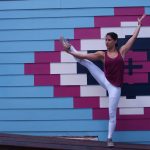Aa a physiotherapist and yoga teacher, I would say without hesitation that one of the most important muscles of the body is the psoas (pronounced so-as). It is the main flexor of the hip and plays a huge role in determining whether our posture is efficient or not. It suffers from the prolonged sitting that modern life brings but yoga helps lengthen it better than any other method of stretching that I know. Here’s how…
First the Anatomy
The name psoas comes from the Greek psoa meaning ‘loin-region’ which gives our first hint of where to find the muscle. It takes a large origin from the transverse processes and lateral aspects of the lower thoracic and all five lumbar vertebrae, plus the intervertebral discs between. It forms a big, fleshy muscle that passes through the pelvis, behind the vital organs, to join up with iliacus to form a common tendon called iliopsoas. This tendon then continues distally and laterally (down and out) to the front of the groin to insert on to the lesser trochanter on the upper, inner part of the femur.
This large muscle complex is an area of transition in the body: it connects back to front, upper body to lower body and inside to outside. It influences the spine, sacroiliac joint and hip and, through direct fascial connections, the diaphragm.
Actions and Reactions
Iliopsoas is the prime mover for hip flexion. When we walk, iliopsoas is working to lift the leg as when we take step forwards. It then lengthens as that hip extends behind us before contracting again to swing the leg forwards into the next step. When the thigh is fixed, as in a sit up, iliopsoas works to flex the trunk over the leg.
In yoga, the psoas is working any time a leg is flexed against gravity — poses like Tree Pose and Utthita Hasta Pādāngusthāsana as well as when we step forwards during our vinyasa. It also works to maintain hip flexion in the front leg of Triangle, Warrior 1 and Warrior 2. It works isotonically as it lifts the leg into a flexed position and isometrically to hold it there.
Psoas lengthens in the extended leg of standing poses with a long stride (e.g. back leg in Warrior 1 and 2) and in back bends. Activation of the gluteus maximus and hamstrings (the antagonists) on that extended hip during the pose will facilitate lengthening through reciprocal inhibition.
Psoas also works eccentrically — lengthening as it contracts — when we extend the spine from an upright position (e.g. lowering into Camel Pose).
The Problems that Psoas Brings
This muscle is designed to be active and loves being taken through it’s full range. Unfortunately modern life has us spending a lot to time with our hips in flexion, like sitting or driving, and doing sports that tighten the psoas rather than stretching it, like running, sit ups or cycling. This can lead to overactive, short psoas muscles.
See Also: Sitting Is the New Smoking: And How Yoga Can Help
Because of its attachments to the spine, when the psoas shortens it pulls the spine into the classic postural adaptation of increased lumbar lordosis and anteriorly tilted pelvis that we see in the lower spinal cross syndrome. This is a common cause of back pain which frequently resolves with hip flexor lengthening work.
As well as causing back pain, a tight, overactive psoas can cause pain from trigger points that develop in the muscle itself. These knots in the muscle can refer pain to the abdomen, back or front of thigh. Once again, lengthening the muscle and its fascial connections can work wonders.
How to Lengthen the Psoas
As already mentioned, some yoga poses automatically encourage lengthening of psoas and this may be enough for some students. Others may benefit from being a bit more specific and these are a few of my favourite tricks to get that deep lengthening that psoas often needs:
- Low Lunge — Come into a low lunge position with the leg to be stretched behind and the knee on the floor. Keeping the back hip above the back knee, gently contract the lower abdomen and tilt the pelvis backwards. Holding this gentle pelvic tilt, push the hips forward until you feel a stretch in the hip and front of thigh. If you don’t maintain the gentle backward pelvic tilt during the pose, as psoas comes under tension it pulls on the spine and arches your back increasing the lumbar lordosis. This doesn’t stretch psoas and is likely to make any back pain worse (or cause it).
-
Supine Lunge — Also described as a half happy baby. Start in happy baby, holding the outer edge of both feet and tucking your knees outside your elbows. Keep hold of one foot to prevent the back arching away from the mat (i.e. keeping the backward pelvic tilt again), straighten the other leg down towards the ground and allow gravity to stretch psoas.
- Lunges — these are a really accessible way of gaining length in the iliopsoas region. Keep the gentle abdominal contraction and backward pelvic tilt as in the low lunge above. Make sure both legs stay really active and push out through the back heel to get the best stretch into psoas.
- Pigeon — The back leg in a classic Pigeon Pose has psoas lengthening as the hip moves into extension. Gently contracting the lower abdomen and spreading the sit bones throughout the whole pose will encourage relaxation of psoas and make the best of the stretch available.
See Also: Does Your Back Hurt From Sitting Too Much? Try These 6 Poses!
A Personal Perspective
As someone with one rather stubborn psoas, I know how uncomfortable life can be with tight hip flexors. But I have also felt the relief of effective and specific lengthening of the muscle and its myofascial connections. These days most people will have an element of tightness in their psoas without even knowing it. Adding some of the techniques above to your classes will help to prevent that tightness becoming problematic and may help to resolve niggling aches and pains before they become injuries. Your students will be so grateful.
The bottom line is to love your psoas and they will love you back, they really are worth it!












